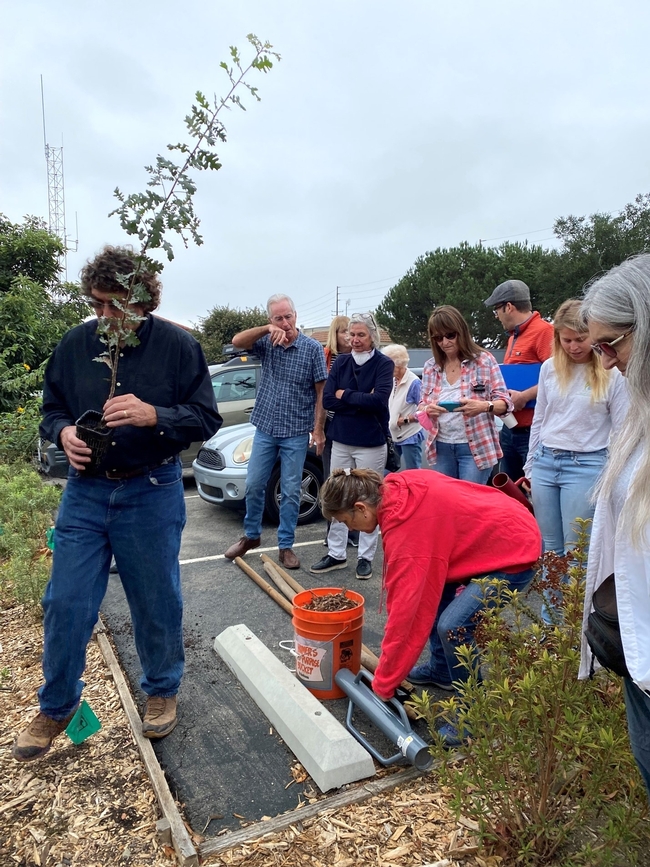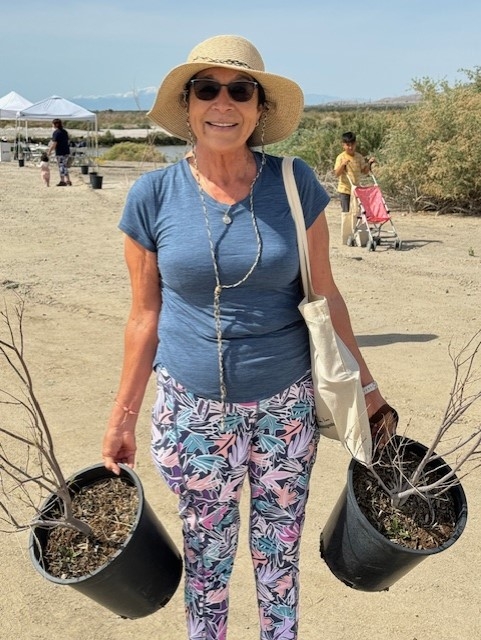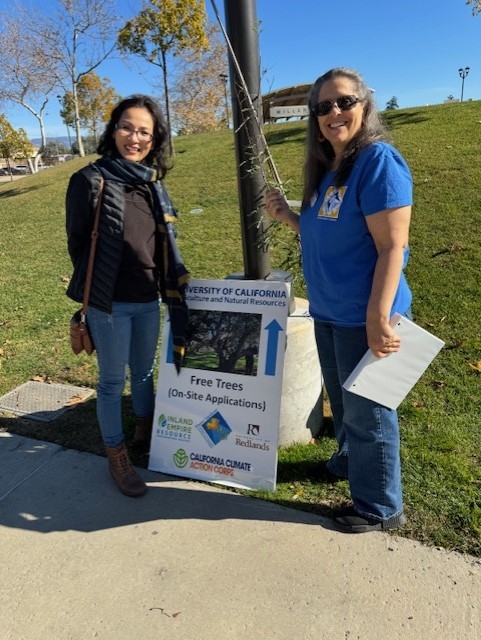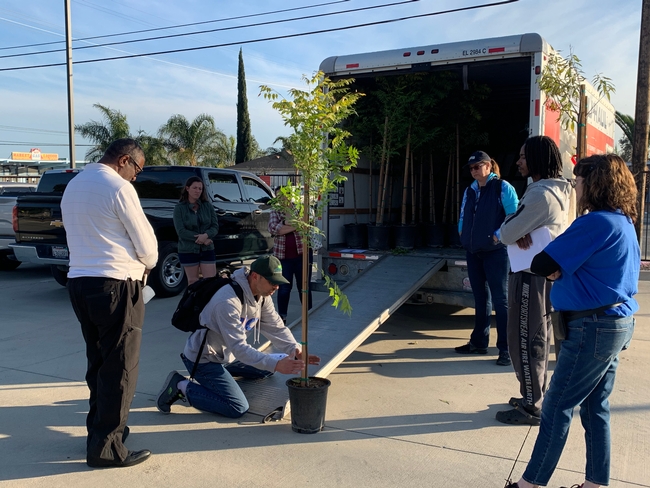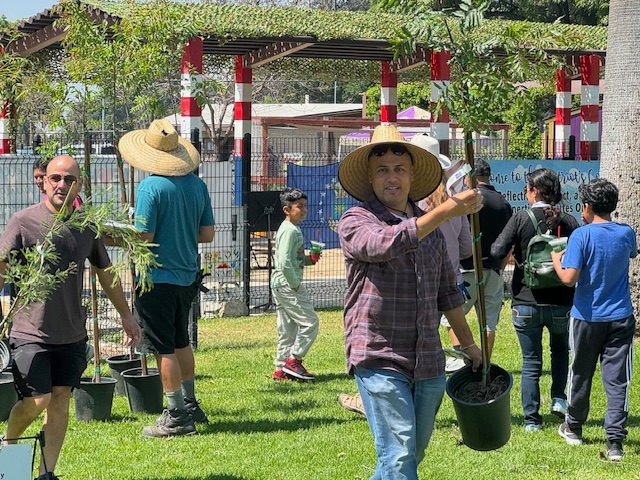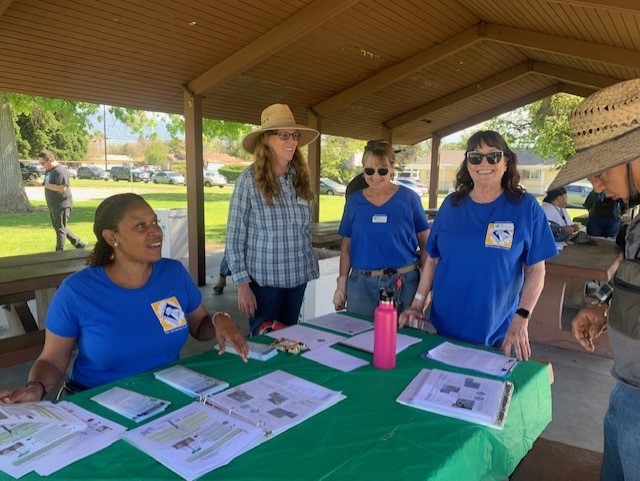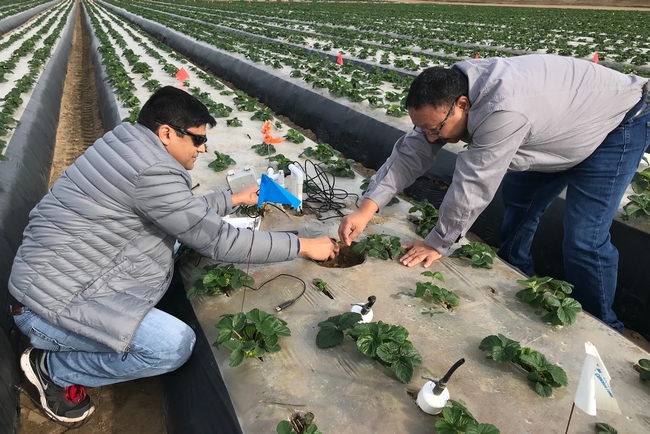Posts Tagged: climate change
Lawn-pocalypse! Surviving Drought
Ah, summer! The season of sunburns, pool parties, and… lawn droughts. If your once lush, green carpet now looks like a crunchy brown doormat, you're not alone. Let's dive into why your yard is staging a dramatic death scene and what you can do to...

Bermuda grass and weeds overtaking drought stressed turf grass.
Webinars explore role of trees in climate change resilience, May 14-16
A free webinar series titled “Trees to the Rescue: Solutions for Climate Change” will be held on May 14-16, from 4 p.m. to 5:30 p.m. each day. The webinars are sponsored by the University of California Thelma Hansen Fund.
“The webinars aim to increase our understanding of the role of trees in mitigating and adapting to climate change, how to plant the right trees and keep them healthy in urban environments, and the challenges of increasing the number of trees at the local level,” said Annemiek Schilder, director of Hansen Agricultural Research and Extension Center, who is organizing the series. Hansen REC is operated by UC Agriculture and Natural Resources.
Participants will discuss some of the challenges and pitfalls of reforestation, urban greening and tree equity. They will also provide diverse perspectives on tree planting and maintenance efforts and policy at the local level.
“Anyone interested in learning about the importance of trees in urban environments and climate resilience, as well as tree retention in the landscape should join us,” she said.
The agenda for each 90-minute webinar is listed below. To register, visit https://bit.ly/HansenTreesWebinar.
Tuesday, May 14: Trees as a Tool for Climate Change Mitigation and Resilience
4 p.m. Welcome—Annemiek Schilder, Director of Hansen Agricultural Research and Extension Center
4:05 p.m. Opening Remarks—Matt LaVere, Ventura County Supervisor District 1
4:10 p.m. Improving Outcomes of Tree Growing and Forest Restoration Efforts—Karen Holl, Professor of Environmental Studies, UC Santa Cruz
4:50 p.m. Climate Resilience through Urban Greening—Edith de Guzman, UC Cooperative Extension Specialist, Water Equity and Adaptation Policy, UCLA
5:30 p.m. Closing—Annemiek Schilder
Wednesday, May 15: Optimizing Tree Survival in a Changing Climate
4 p.m. Welcome—Emma Volk, Production Horticulture Advisor, UCCE Ventura and Santa Barbara counties
4:05 p.m. Cooling Urban Heat Islands with Climate-Resilient Trees—Janet Hartin, Environmental Horticulture Advisor, UCCE Los Angeles and San Bernardino counties
4:30 p.m. Keeping Trees Healthy from Sapling to Maturity—James Downer, Environmental Horticulture and Plant Pathology Advisor Emeritus, UCCE Ventura County
5:05 p.m. Dealing with the Inevitable Threat of Exotic and Invasive Pests—John Kabashima, Environmental Horticulture Advisor Emeritus, UCCE Orange County
5:30 p.m. Closing—Emma Volk
Thursday, May 16: Tree Advocacy and Planning at the Local Level
4 p.m. Welcome—Julie Clark, Natural Resources Community Education Specialist, UCCE Ventura County
4:05 p.m. Native Tree Restoration with Partners and the Public—Joey Algiers, Restoration Ecologist, Santa Monica Mountains National Recreation Area
4:30 p.m. Panel Discussion (Joey Algiers, moderator):
- Joey Algiers, Santa Monica Mountains National Recreation Area
- Mireille Vargas, County of Ventura Sustainability Division
- Mikaela Randolph, Green Schoolyards America
- Jan Scow, Registered Consulting Arborist, Ojai Valley
- Max Young, Ventura Regional Fire Safe Council
5:30 p.m. Closing—Julie Clark
2,000 Climate-Ready Trees Provided to Residents of Low Shade Neighborhoods
To date, over 2,000 climate-ready shade trees and tips on their planting and long-term care have been provided by UC Master Gardeners and over 20 partners to residents of low shade neighborhoods in San Bernardino and Riverside Counties through the “Trees for Tomorrow Start Today” project. Tree species given away are identified from research projects including the joint University of California/United States Forest Service (USFS) study at UC Riverside as well as from other research, local observations, and input from the green industry and academic colleagues.
The "Trees for Tomorrow Start Today" project was implemented in 2019 by Area UC Cooperative Extension Horticulture Advisor Janet Hartin with support from Mandy Parkes, Inland Empire Resource Conservation District Manager. A "train the trainer" model provided education to Master Gardener volunteers from San Bernardino County on project elements and follow-up. Master Gardeners now manage many of the events. In 2023, the program expanded into Riverside County. Several other Master Gardener programs throughout the state have also expressed interest in implementing the "Trees for Tomorrow Start Today" project.
Why is this project so important? 95% of Californians now reside in cities and suburban environments. Resulting urban heat islands created by built environments coupled with impacts of climate change can be mitigated through nature-based solutions. Planting climate-ready shade trees now will help ensure cooler urban areas in the next several decades as trees mature and maximize their urban ecosystem benefits. Fortunately, the shade from a single well-placed tree can decrease surface temperatures of black asphalt and artificial turf by more than 70 degrees F in hot inland and desert cities. Studies show that surrounding air temperatures can also be reduced through the transpiration process.
A major goal of the"Trees for Tomorrow Start Today" project is to enhance tree canopy cover in low shade neighborhoods also plagued with much higher than average levels of air pollution and pulmonary and cardiovascular disease incidence. Events over the past month have occurred in Fontana, San Bernardino, and the Salton Sea.
Other partners include San Bernardino County, City of San Bernardino, California Climate Action Fellows, Tree People, Coachella Valley Resource Conservation District, Alianza Coachella Valley, Inland Empire Urban Conservation Corps, several water districts, and other groups.
Thank you to all our partners and, especially, our tree recipients, for greening and cooling your yard and neighborhood!
Water risks to agriculture: Too little and too much
Water is among the most precious resources on the planet. Some areas don't get enough; some get too much. And climate change is driving both of those circumstances to ever-growing extremes.
Two UC Merced experts in civil and environmental engineering took part in a recent report by the Environmental Defense Fund examining the issue and potential solutions. Associate Professor of Extension Tapan Pathak and Professor Josué Medellín-Azuara co-authored the report, "Scarcity and Excess: Tackling Water-Related Risks to Agriculture in the United States," and wrote the section pertaining to California.
In addition to climate change, disruptive human interventions such as groundwater over-extraction, sprawling drainage networks and misaligned governance are driving up water-related agricultural costs, particularly in midwestern and western states, the researchers found.
The problem is magnified in California, which hosts the largest and the most diverse agricultural landscape in the U.S., Pathak and Medellín-Azuara wrote, with gross revenues from farms and ranches exceeding $50 billion.
"Due to the favorable Mediterranean climate, unique regional microclimate zones, a highly engineered and developed water supply system, and a close connection between producers and research and cooperative extension institutions, California's agricultural abundance includes more than 400 commodities, some of which are produced nowhere else in the nation," the UC Merced researchers wrote.
But the state's varying climate and water needs pose a challenge. Though most of the precipitation falls in the northern part of California, the southern two-thirds of the state account for 85% of its water demand. And all of those crops must be watered in the summer, when there is little, if any, rainfall.
Some of the water comes from snowpack developed through winter storms and stored in reservoirs as it melts. Much of it comes from the Colorado River.
"Substantially less water is captured and stored during periods of drought, imperiling California's water supply and putting agricultural water needs at risk," Pathak and Medellín-Azuara wrote.
Climate change, with increasing periods of drought between excessively wet winters, magnifies that risk.
"Further, the rate of increases in the minimum temperatures in the Sierra Nevada is almost three-fold faster than maximum temperatures, resulting in potential decrease in the snowpack, earlier snowmelt, and more water in liquid form as opposed to snow," the researchers wrote. "According to the California Department of Water Resources, by 2100, the Sierra Nevada snowpack is projected to experience a 48% to 65% decline from the historical average."
Climate change is also expected to affect the availability of water from the Colorado River.
Climate extremes such as heat waves, drought and flooding - giving rises to increased weeds, pests and disease - are already significantly impacting agriculture and the broader economy, Pathak and Medellín-Azuara wrote.
The state's drought from 2012 to 2016 led to about 540,000 acres of fallow farmland in 2015, costing the state's economy $2.7 billion in gross revenue and 21,000 jobs. With the lack of precipitation, farmers increasingly pumped groundwater to irrigate crops, depleting those resources.
The report goes on to recommend policies, programs and tools be developed for agricultural resilience, including:
- Changing land use and crop management practices to support a transition to an agriculture footprint that can be sustained by the available water supplies.
- Increasing farmer and water manager access to important data and innovative technological tools to support their efforts.
- Reimagining built infrastructure and better using natural infrastructure so regions are better equipped to handle weather extremes.
- Developing policy and funding mechanisms to support mitigation and adaptation to water-related risks, avoid maladaptation and ensure food and water security.
"California's innovative agriculture needs to rapidly adapt to more volatile water availability, climate-driven higher water demands, and regulation protecting groundwater reserves, communities and ecosystems," Medellín-Azuara said. "The early adoption of more sustainable practices in agriculture will likely pay off dividends both in the short and long terms."
Added Pathak, "California faces significant challenges related to climate change, but it also presents opportunities for innovations, collaborations and sustained growth. To make agriculture resilient to climate risks, we need to engage in holistic solutions that integrates environmental, social, economic and policy considerations."
In Hotter Regions, Mammals Seek Forests, Avoid Human Habitats
The cool of the forest is a welcome escape on a hot day. This is especially true for mammals in North America's hottest regions, according to a study from the University of California, Davis. The study indicates that, as the climate warms, preserving...


